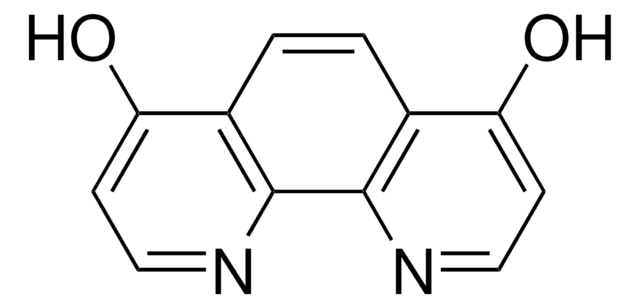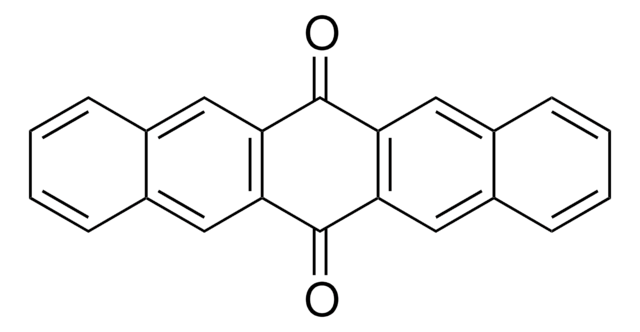추천 제품
Quality Level
분석
95%
양식
powder
mp
209-212 °C (lit.)
SMILES string
O=C1C(=O)c2ccccc2-c3ccccc13
InChI
1S/C14H8O2/c15-13-11-7-3-1-5-9(11)10-6-2-4-8-12(10)14(13)16/h1-8H
InChI key
YYVYAPXYZVYDHN-UHFFFAOYSA-N
유전자 정보
human ... PTPN1(5770) , PTPRC(5788)
유사한 제품을 찾으십니까? 방문 제품 비교 안내
일반 설명
The quinones of polycyclic aromatic hydrocarbons are present in abundance in all burnt organic material. On being used to passivate silicon surfaces, it reacts with the dangling bonds on the surface via a heteroatomic Diels-Alder reaction. On account of the Π-electron conjugation, the semi conducting nature of the silicon is unaffected.
애플리케이션
9,10-Phenanthrenequinon may be used for high quality passivation on silicon (100) surfaces. Quinones may serve as substrates for a variety of flavoenzymes.
신호어
Warning
유해 및 위험 성명서
Hazard Classifications
Aquatic Acute 1 - Eye Irrit. 2
Storage Class Code
11 - Combustible Solids
WGK
WGK 3
Flash Point (°F)
473.0 °F
Flash Point (°C)
245 °C
개인 보호 장비
dust mask type N95 (US), Eyeshields, Gloves
이미 열람한 고객
P L Chesis et al.
Proceedings of the National Academy of Sciences of the United States of America, 81(6), 1696-1700 (1984-03-01)
The mutagenicity of various quinones, a class of compounds widely distributed in nature, is demonstrated in the Salmonella TA104 tester strain. The metabolic pathways by which four quinones, menadione, benzo[a]pyrene 3,6-quinone, 9,10-phenanthrenequinone, and danthron, caused mutagenicity in this test system
Electronic structure and band alignment of 9, 10-phenanthrenequinone passivated silicon surfaces
Avasthi, Sushobhan, et al.
Surface Science, 605(13), 1308-1312 (2011)
Keiko Taguchi et al.
Free radical biology & medicine, 44(8), 1645-1655 (2008-02-26)
9,10-Phenanthraquinone (PQ), a component of airborne particulate matter, causes marked cellular protein oxidation and cytotoxicity through a two-electron reduction to 9,10-dihydroxyphenanthrene (PQH2), which is associated with the propagation of reactive oxygen species (K. Taguchi et al., Free Radic. Biol. Med.
Chester E Rodriguez et al.
Toxicology in vitro : an international journal published in association with BIBRA, 22(2), 296-300 (2007-10-26)
The estimated cancer risk from diesel exhaust particles (DEP) in the air is approximately 70% of the cancer risk from all air pollutants. DEP is comprised of a complex mixture of chemicals whose carcinogenic potential has not been adequately assessed.
Toshiyuki Matsunaga et al.
Free radical research, 45(7), 848-857 (2011-06-01)
9,10-Phenanthrenequinone (9,10-PQ), a redox-active quinone in diesel exhausts, triggers cellular apoptosis via reactive oxygen species (ROS) generation in its redox cycling. This study found that induction of CCAAT/enhancer-binding protein-homologous protein (CHOP), a pro-apoptotic factor derived from endoplasmic reticulum stress, participates
자사의 과학자팀은 생명 과학, 재료 과학, 화학 합성, 크로마토그래피, 분석 및 기타 많은 영역을 포함한 모든 과학 분야에 경험이 있습니다..
고객지원팀으로 연락바랍니다.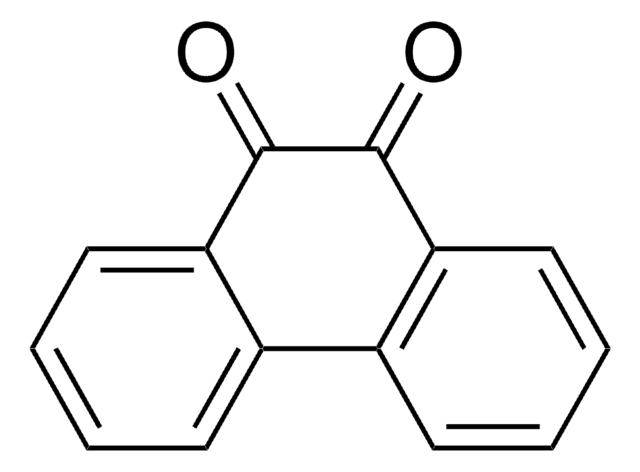

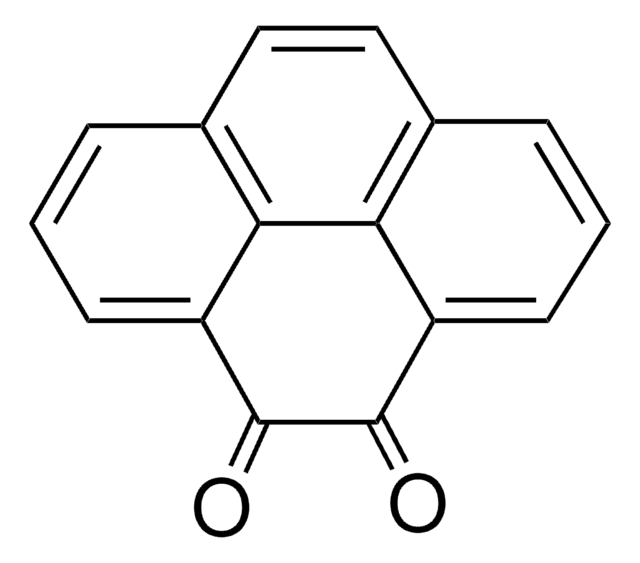
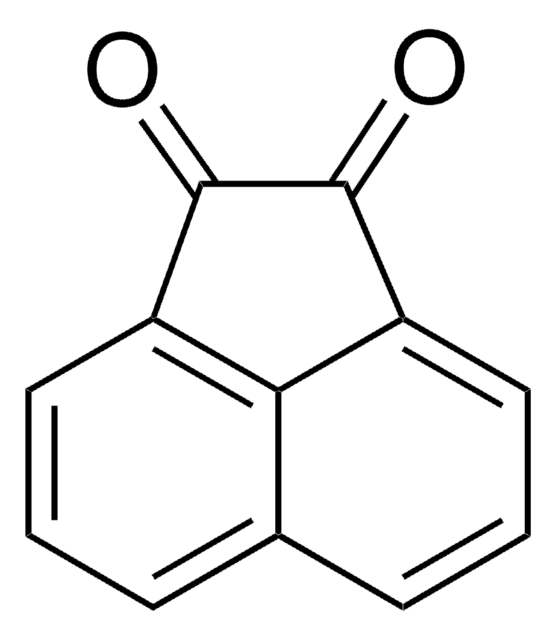



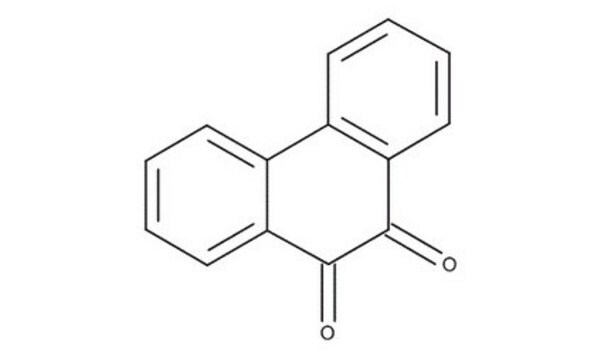
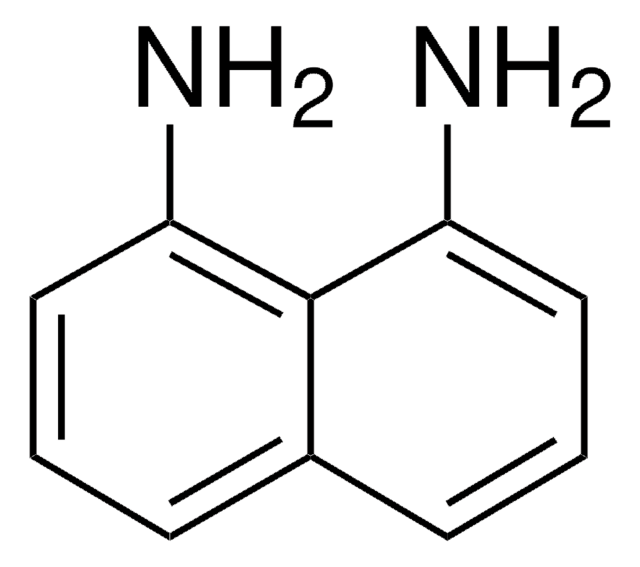
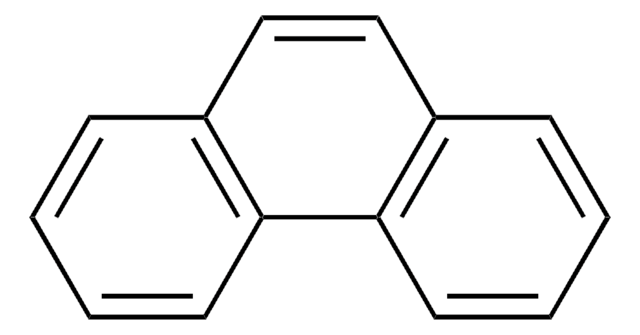



![6H-Benzo[cd]pyren-6-one BCR®, certified reference material](/deepweb/assets/sigmaaldrich/product/structures/121/467/11adf097-4f11-4b40-a73f-910f36624e9c/640/11adf097-4f11-4b40-a73f-910f36624e9c.png)
